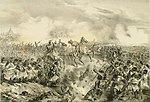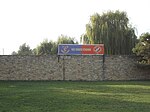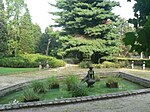Roman Catholic Diocese of Vác
1008 establishments in EuropeRoman Catholic Ecclesiastical Province of EgerRoman Catholic dioceses in HungaryVác

The Diocese of Vác, (Latin: Dioecesis Vaciensis) is a Latin Church ecclesiastical territory or diocese of the Catholic church in Hungary, with its seat in Vác. The diocese was created in 1008 by St. Stephen, the first King of Hungary. Originally known as the "Diocese of Waitzen" in German, it is a suffragan diocese in the ecclesiastical province of the Archdiocese of Eger. The current bishop is Zsolt Marton, who was appointed in 2019.
Excerpt from the Wikipedia article Roman Catholic Diocese of Vác (License: CC BY-SA 3.0, Authors, Images).Roman Catholic Diocese of Vác
Konstantin tér, Váci járás
Geographical coordinates (GPS) Address Nearby Places Show on map
Geographical coordinates (GPS)
| Latitude | Longitude |
|---|---|
| N 47.7759 ° | E 19.1309 ° |
Address
Nagyboldogasszony-székesegyház (Váci dóm) (Nagytemplom Alsóvárosi templom)
Konstantin tér
2600 Váci járás, Belváros
Hungary
Open on Google Maps






